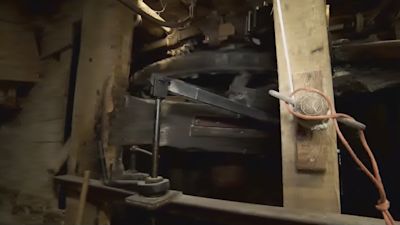Historic Cumbrian flour mill stays on heritage risk list a year after reopening

An historic corn mill in Cumbria has remained on an 'at risk' register after the water used to power it began to leak into the building.
This news comes a year after it began making flour for the first time in more than three decades to cope with demand from the baking boom of the first lockdown.
Historic England's latest at-risk register includes Warwick Mill among 77 buildings and structures which need the most help in the North West.
The register is the yearly "health-check" of England's historic places and includes those most at risk of being lost forever as a result of neglect, decay or inappropriate development.
The mill - at Warwick Bridge, near Carlisle - can trace its roots back to the 12th century, with the existing building being put up in 1839.
It has been on the Heritage at Risk Register for more than 20 years. It fell into a poor condition after becoming empty in 1989 when the miller retired. It was sold to a housing developer, but plans were never taken forward.
North of England Civic Trust, now Cultura, acquired the mill in 2015.
It has received several grants since then, including £185,000 from Historic England and £2m from the National Lottery Heritage Fund. Historic England have described the structures as "largely repaired".A spokesperson said:
New issues arose though once milling began again, particularly leaks. While these are investigated, there is a chance a need for further repairs may be found, which has resulted in the building staying on the at-risk register.
Across the North West, six sites have been added to the register because of concerns about their condition and seven have been saved.
Catherine Dewar, Historic England's North West regional director, said: "Our heritage is an anchor for us all in testing times. Despite the challenges we have faced recently, this year's Heritage at Risk Register demonstrates that looking after and investing in our historic places can contribute to the country's economic recovery, bring communities together and help tackle climate change by avoiding carbon emissions from building new.
The as well as the 77 buildings in the North West on the register there are 136 places of worship, 82 archaeology entries (non-structural scheduled monuments), eight parks and gardens and 69 conservation areas.
The total number of Cumbrian entries across all categories is 91. To explore the register in full, click here.
Read more: